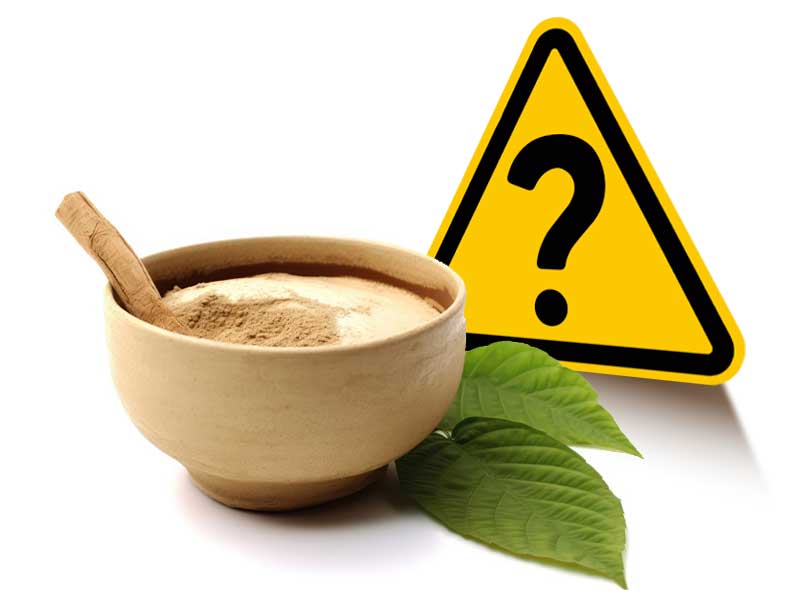How Safe is Kava? The Truth Behind Risks, Myths, and Realities

Kava has been a calming staple in South Pacific cultures for centuries, celebrated for its soothing, social, and ceremonial qualities. It’s made by grinding the root of the Piper methysticum plant and mixing it with water—a simple process that’s been passed down through generations.
In recent years, kava’s relaxing effects have caught the attention of people worldwide, showing up in wellness shops, kava bars, and even anxiety relief supplements. But along with the buzz, there’s also been confusion—and concern—about whether kava is truly safe. Kava’s safety can seem confusing, especially with all the mixed messages out there—but when you look closely at the science, traditional practices, and expert insights, a much clearer picture emerges.
Why People Love Kava
Kava contains natural compounds called kavalactones. These plant chemicals interact with brain receptors that influence calmness, mood, and even muscle tension. Studies show that kava can help reduce anxiety, improve sleep quality, and support relaxation without impairing mental clarity (study).
That’s why many people turn to kava for:
-
Stress relief
-
Easing mild anxiety
-
Social relaxation
-
Unwinding before bed
When used as intended—moderate amounts of noble kava root mixed with water—it tends to be gentle and well-tolerated by most.
Liver Issues: Why They’re Rare and Often Misunderstood
There’s no denying that kava’s name was dragged through the mud in the early 2000s, after reports of liver injury surfaced. This led to temporary bans in several countries and a lot of worried headlines.
But here’s the truth: severe liver reactions to kava are extremely rare, and almost always linked to situations far removed from traditional use.
The Main Triggers Behind Liver Concerns:
-
Solvent-Based Extracts: Many of the reported cases involved kava extracts made using harsh solvents like acetone or ethanol. These methods can pull out harmful substances like flavokavains, which aren’t found in traditional water-based preparations (LiverTox: Clinical and Research Information on Drug-Induced Liver Injury).
-
Non-Noble Kava & Contamination: Cheap, low-quality products sometimes contain aerial parts of the plant (like stems and leaves) instead of just the root. These parts can contain pipermethystine, a compound that can be toxic to the liver (PMID: 18271308).
-
Excessive Dosing: Some adverse cases involved people consuming unusually high doses of kava—far beyond traditional amounts—and sometimes mixing it with alcohol or medications.
According to a recent News Medical article, these risk factors were common threads in many liver-related cases. Most involved either excessive use or non-traditional products not aligned with Pacific Island practices.
How Rare Are These Problems?
Large reviews estimate the risk of severe liver injury from kava to be about 1 in 60 to 125 million doses (A re‐evaluation of kava). By comparison, that’s far rarer than serious liver reactions from common over-the-counter medications like acetaminophen.
In Pacific Island communities, where kava is part of daily life, widespread liver failure isn’t seen. While heavy long-term use can sometimes cause skin changes known as “kava dermopathy,” these are usually harmless and reversible when use is reduced.
Why Traditional Kava is the Safest Choice
Here’s why sticking with traditional, water-extracted noble kava root—like the high-quality options from Kava Depot—is the best bet:
-
Water Extraction Only: No solvents, no hidden chemicals.
-
Noble Varieties Only: Noble kava has been consumed safely for generations.
-
Lab-Tested: Reputable suppliers offer COAs showing kavalactone content, chemotype, and purity.
-
Sustainable Sourcing: Ethically harvested from trusted farms.
This isn’t just marketing—it’s backed by science and centuries of safe use.
Simple Tips for Enjoying Kava Safely
To get the most from your kava experience, here are a few friendly tips:
-
Stick to noble kava root powders, prepared the traditional way with water.
-
Keep servings moderate—most guidelines recommend under 250 mg of kavalactones per day.
-
Avoid mixing kava with alcohol or medications that affect the liver or nervous system.
-
Take occasional breaks from kava to give your body a rest.
-
Listen to your body. If you feel unusual symptoms (fatigue, abdominal pain, yellowing skin), pause use and consult a healthcare professional.
Kava Regulations Around the World
Global attitudes toward kava have softened in recent years, thanks to better understanding of how risks arise mainly from poor-quality or improperly prepared products.
Here’s a quick look at some current regulatory positions:
-
Australia & New Zealand: Allow only traditional, water-based kava from noble roots. Daily kavalactone limit capped at 250 mg.
-
European Union: Some countries have lifted prior bans, though restrictions vary.
-
United States: No outright ban, but the FDA issued a caution in 2002 and reminds consumers of potential liver risks.
Most regulatory bodies—including the World Health Organization—now agree that traditional water-based kava has an “acceptably low” risk profile for healthy adults using it responsibly (LiverTox: Clinical and Research Information on Drug-Induced Liver Injury).
Your Easy Consumer Checklist
Here’s a handy guide to keep your kava journey safe and enjoyable:
| Question | Tip |
|---|---|
| What Type of Kava? | Use noble root, water-extracted powders only. |
| How Much? | Stay under 250 mg kavalactones per day. |
| For How Long? | Take breaks—don’t use daily for long stretches. |
| Any Mix-Ins? | Avoid alcohol, sedatives, or liver-affecting meds. |
| Product Quality? | Check for COA, noble variety confirmation. |
| Health Conditions? | Avoid if pregnant, breastfeeding, or under 18. |
The Bottom Line
When it comes to kava, the takeaway is simple: quality, moderation, and tradition matter.
Kava root powders—prepared with water, sourced from noble varieties, and consumed in sensible amounts—are remarkably safe and effective for most people seeking relaxation or anxiety relief. The horror stories? They’re largely tied to unsafe extracts, excessive use, and poor-quality products.
Stick to reputable sources like Kava Depot, follow time-honored preparation methods, and you’ll enjoy everything kava has to offer—with peace of mind.

